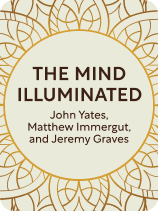

This article is an excerpt from the Shortform book guide to "The Mind Illuminated" by Culadasa, Matthew Immergut, and Jeremy Graves. Shortform has the world's best summaries and analyses of books you should be reading.
Like this article? Sign up for a free trial here.
Do you want to be more aware of your surroundings? What’s the key to achieving mindfulness?
Strong concentration is half of mindfulness—the other half is strong background awareness. In The Mind Illuminated, you’ll strengthen your background awareness while still maintaining strong concentration on your breath.
Check out how to achieve mindfulness by staying in touch with your present self.
Achieve Strong Mindfulness
According to the authors, you can learn how to achieve mindfulness when you can continuously and neutrally observe your mind (an ability the authors call “metacognitive introspective awareness”). This involves keeping track of your thoughts, your emotions, and your perceptions of and reactions to external stimuli. We’ll call this process mind-watching.
Mind-watching develops your ability to maintain some distance from your thoughts and emotions. This allows you to be more objective so you can respond to situations intentionally rather than rashly or emotionally. Recall our earlier example of mindfully listening to your child tell you a story from her school day: Strong background awareness made you objectively aware of and distant from your frustration, preventing you from snapping at your child. All the while, you continued listening to your focal point (your child’s story)—the result of strong concentration. You then responded to your daughter intentionally.
To practice mind-watching through meditation, constantly monitor your thoughts, feelings, and reactions to stimuli while still maintaining concentration on your breath. This is like the aforementioned strategy of categorizing, except you categorize constantly instead of only in response to distractions. This keeps you in “analysis” mode rather than “feeling” mode, ensuring that you keep some objective distance from your thoughts and emotions.
For example, say you’re meditating and you notice the cool temperature of the air in your nose (a result of strong concentration). You observe the effect this has on your mind: It makes you feel calm. Then, you hear a sound in the distance (external stimuli), and you notice its effect on you—it prompts a strong visualization of your childhood home. You categorize this thought as a memory, then you categorize the effect this memory has on your emotions: It makes you feel happy. You’re not probing deeper into these thoughts and feelings by asking why the air makes you calm, wondering what produced the sound, or thinking more about your childhood. You’re simply noticing and categorizing.
Mindfulness Outside of Meditation
The authors of TMI focus on describing how to achieve strong mindfulness while meditating, but they don’t explore in depth how to do so outside of meditation. Therefore, it may be difficult to experience the benefits associated with mindfulness at times when you can’t meditate—for instance, if you’re in a difficult meeting at work and want to respond mindfully, but can’t step away for an impromptu meditation session. Let’s discuss how you might achieve mindfulness in a scenario like this.
According to some psychologists, anxiety-provoking moments—such as giving a performance—are an opportune time to tap into mindfulness. In these situations, you’re likely to have negative thoughts, such as “I’m going to fail.” Reframe the thought using a technique called self-distancing that helps quiet strong emotions (like anxiety). Think to yourself, “I’m having the thought that I’m going to fail.” Like categorizing, this technique involves objectively analyzing your thoughts rather than ruminating on them.
In Wherever You Go, There You Are, Jon Kabat-Zinn also investigates how to achieve mindfulness in everyday life. Like the authors of TMI, Kabat-Zinn says that mindfulness involves objective mind-watching—you watch your thoughts without judging or influencing them. He offers the following suggestions for practicing mindfulness in daily life:
- Notice your breath sensations. Like the authors of TMI, Kabat-Zinn describes the breath as a focal point to return to any time your mind wanders. Because your breath is always with you, you can turn your attention to it anywhere, anytime.
- Be mindful during specific moments. Identify everyday actions, such as every time you open a door, and vow to pay full attention to the present in those moments.

———End of Preview———
Like what you just read? Read the rest of the world's best book summary and analysis of Culadasa, Matthew Immergut, and Jeremy Graves's "The Mind Illuminated" at Shortform.
Here's what you'll find in our full The Mind Illuminated summary:
- That the true goal of meditation is to reach enlightenment
- The 10 sequential stages you can follow to improve your meditation practice
- Cultural, historical, and scientific insights about meditation






